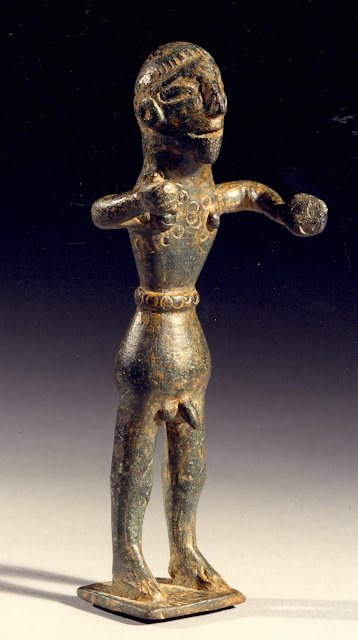The Iron Age Tartessian culture of southeastern Spain, previously influenced by the Phoenicians, began to transform when exposed to Greek influence during the 6th - 4th centuries BCE. Aristocratic power increased and numerous fortified oppidums began to appear. Referred to as the Iberian culture, the people engaged in commerce that served to reinforce aristocratic power and control. Iberian funerary customs became dominated by Greek-style mud-brick rectangular burial mounds and their script, once a modified version of the Phoenician alphabet, began to include a variant of the Greek alphabet. Their mythology also began to include creatures such as winged griffins, often seen in Greek art.
An early warrior figure of this period appears to fight mostly nude adorned only with what appear to be tatoos on his chest and an ornate belt. A century later, an Iberian warrior depicted in a statue at the Los Angeles County Museum of Art dated from the 3rd to 2nd century BCE is shown wearing body armor and helmet. This would have been the appearance of the Iberian warriors facing the Romans who conquered the area beginning in 220 BCE.
 |
| Iron Age figure of a warrior once holding weapons 600-400 BCE southern or eastern Iberian peninsula at the Royal Ontario Museum in Toronto, Canada courtesy of the museum |
 |
| Iberian warrior of the 3rd - 2nd century BCE at the Los Angeles County Museum of Art courtesy of the museum. |
 |
| Recreation of an Iberian warrior from the 5th-4th century BCE, with his weapons (falcata, shield, plate bib, linothorax) courtesy of the Museo de Prehistoria de Valencia |
 |
| Iberian equestrian statue 490 BCE from the Provincial Archaeological Museum of Albacete. |







Comments
Post a Comment